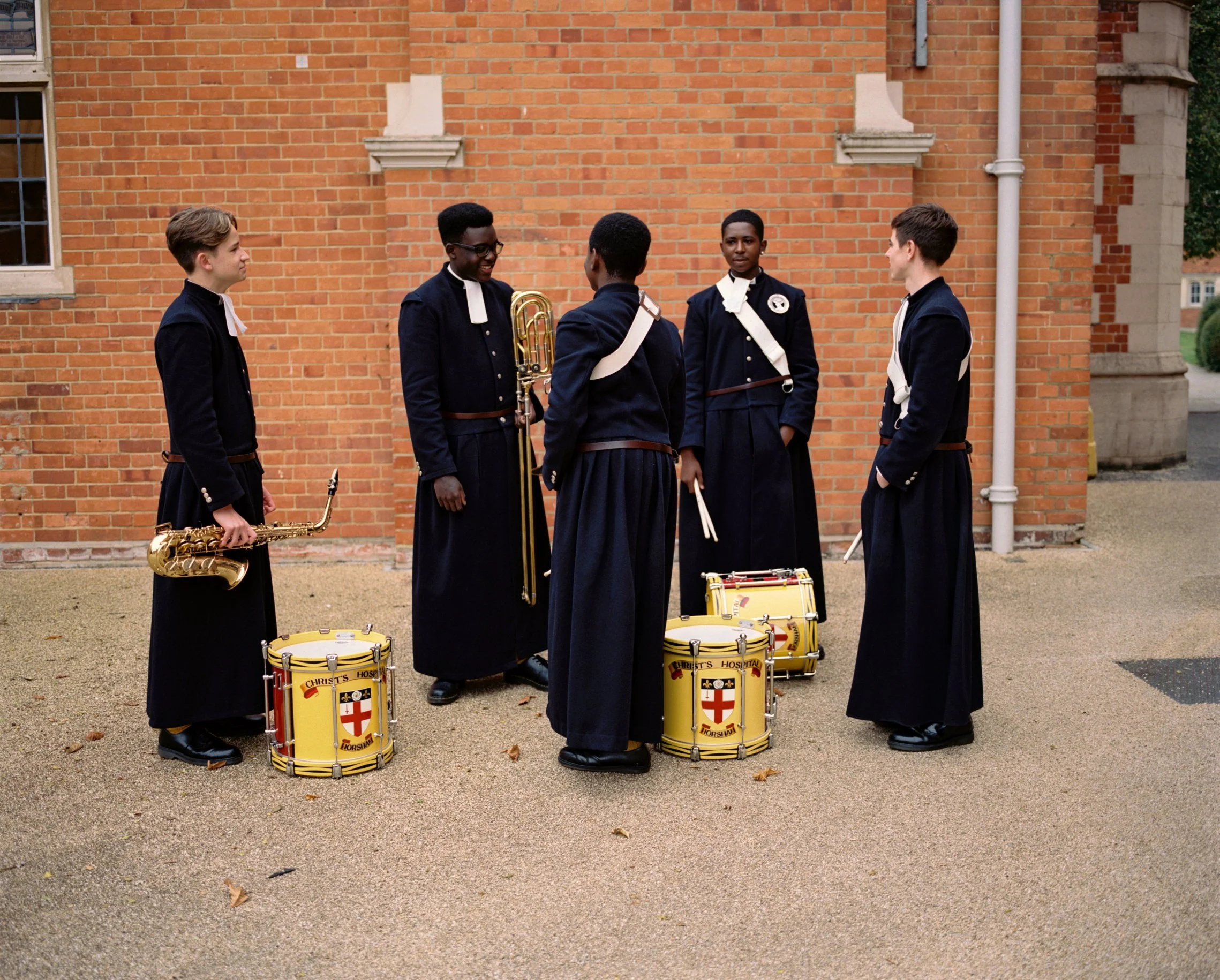








































































































Batons & Brass //
Developed to inspire and organise troops on the battlefield, marching bands have become a wildly influential force in global culture. Often accompanied by baton-twirling, flag or pom pom-waving majorettes, the form simultaneously contains some of the most traditional artistry in the world, and the most progressive. Highly regarded groups push the envelope, from hip-hop and jazz inflected HBCU Dance teams to the massive six-to-five-stepping spectacle of the Ohio State University Marching Band. Dance routines and precise formations are inspired by themes as diverse as homelessness, chess or the fictional characters Jekyll & Hyde. My research led me to pursue more classical iterations from Kyiv, Mexico City, Bulgaria and circling back to the UK via clubs, practice halls, school fields and stadiums.
The photos in the series take us on a journey which included ‘Christ's Hospital Band’, a charitable English boarding school founded in 1552. Here they honour a spectacular tradition, where over 100 young musicians gather weekly with their oboes, piccolos, tubas and drums to march all 900 school pupils into lunch through the school’s vast grounds. Christ's Hospital's marching band resists the trend towards more progressive uniforms but instead wear what is possibly the oldest in existence hardly altering since Tudor times. Consisting of a long blue coat, belted at the waist, worn with matching knee breeches, yellow socks and white neck bands and the female counterparts with matching skirt.
Other images take us to the streets of Kyiv, Ukraine where before the Russian invasion, I documented an all-female civil drum orchestra created in 1985 called ‘Kyianky’ meaning ‘Women who are citizens of Kyiv city’. They play drum compositions in different genres and Ukrainian national compositions and create precise formations whilst in procession. Playing nationally & internationally but most notably on the military parades dedicated to the day of Ukrainian Independence every August 24th. Ranging in age from 6 to 25, the band boasted 17 different uniforms - the designs which retain many of their military influences are embellished with tassels, fringe, ribbon and other ornate designs. The ongoing conflict and repeated attacks on Kyiv, scattered the orchestra as members found refuge in different countries around the world. More recently, many have returned, and the Orchestra continues.
For groups ‘Castle Cary Cygnets Majorettes’ and the ‘Bury Starlet Baton Twirlers’ participation is a privilege and instils a sense of responsibility, community, and self-discipline from an early age. Wherever they are in the world, Marching bands, Drum Corps, Baton Twirlers and Majorettes groups express collective identity through uniform, music and movement in contribution to a radically evolving global culture.

Eights //
'Eights' for Victory Journal magazine, issue 10. The boat race between Oxford and Cambridge universities is one of England’s most storied competitions. It’s a four-mile, 374- yard sprint along a choppy section of the River Thames. The Race has gone largely unchanged in its 186 year history, until this year, when the Oxford and Cambridge women’s crew raced on the same day as the men. The rowers only want to win. In a world where one race seals the legacy of an entire season, nothing else matters. Words: Beejoli Shah.